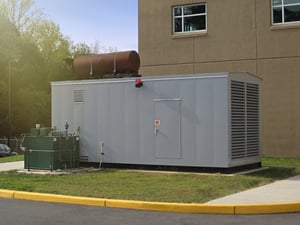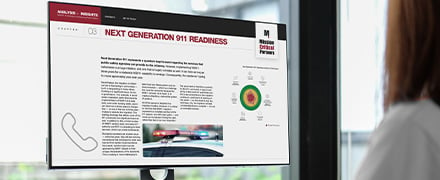Power Management Considerations for the Public Safety Facility of the Future
Posted on May 23, 2018 by Jeff Lupinacci
 Over the last year, we’ve talked a lot about the operational impact that technology and data will have on public safety agencies and public safety answering points (PSAPs). While advanced telecommunicator training, new data systems, improved network management and cyber security will remain a focus for government and PSAP leaders, as we look ahead to the future we must also take into consideration how these changes and technology advancements will ultimately affect the physical public safety facility, as well.
Over the last year, we’ve talked a lot about the operational impact that technology and data will have on public safety agencies and public safety answering points (PSAPs). While advanced telecommunicator training, new data systems, improved network management and cyber security will remain a focus for government and PSAP leaders, as we look ahead to the future we must also take into consideration how these changes and technology advancements will ultimately affect the physical public safety facility, as well.
Public safety facilities essentially operate on information. Often, these facilities are retrofitted into existing buildings and office spaces that are not equipped for the mission-critical nature of such an operation, resulting in the potential for system and service failures that could interrupt, or worse – stop, the flow of that information. As PSAPs become increasingly reliant on the transmission of large amounts of data flowing in and out, they will also need to support more redundancy to allow operations to continue without interruption. To do this, there are several components that need to be reviewed to address possible points of failure.
Primary Facility Power
Arguably, the most important component is how the facility will be powered. While a local power company may be able to provide a separate power feed, it needs to be verified if the redundant power feed takes a geo-diverse path to the same substation, or, preferably, to a different substation. If this isn’t verified, the redundant feeds could merge at a power pole across town, thus losing redundancy if that pole is damaged.
Back Up Power
Locally generated emergency power, with adequate stored fuel (at least 72 hours) is also required. Generators are notoriously infamous for failing to start when needed, so an N+1 redundant solution should be considered, with two or more generators on-site. Each generator should have a minimum 72 hours of fuel, since fuel-sharing is against the National Fire Protection Association’s (NFPA) National Electrical Code (NEC) regulations. The ability to intelligently and automatically synchronize and switch between power sources is also required. Redundant automatic transfer switches (ATS) should be implemented for this purpose.
Power Delivery
Once primary and backup power solutions have been identified, the facility’s power should be filtered through an uninterruptable power supply (UPS) for distribution to the end users. The UPS plays a critical role in providing a constant supply of power as the ATS switches between different power sources. A redundant UPS can help eliminate the potential for failure and provide circuit diversity.
Communications Feeds
The primary circuits that support separate 911 and data circuits, including the internet connection, make up the mission-critical pathways from the community to the PSAP and the PSAP to first responders. Communications feeds should be duplicated for redundancy to the serving telephone company central office or diverse central offices. The use of cloud-based services and emergency services internet protocol (IP) networks, or ESInets, also requires a redundant pathway – similar to power feeds, diversity needs to be verified to ensure true pathway redundancy.
Electronics
The identification of single points of failure in electronics can also be eliminated by deploying redundant electronics. Without back-up electronics, the time, effort and money agencies put into verifying and reviewing redundancy in power and communications feeds can, ultimately, be worthless.
As technology continues to advance, more of today’s systems and services will move to cloud-based environments with mission-critical operations at the forefront. These systems will be hosted in dedicated data centers that are run by specialized data professionals – eliminating the need for additional equipment storage within public safety facilities and leading to overall cost savings for agencies.
If your agency is planning to upgrade or replace its existing facility, a consultant can work with you to develop your operations concept and facilitate the systems procurement and integration processes. In addition, a consultant will act as your advocate to ensure that all systems are fully tested for redundancy and operating based on your agency’s specific needs. To learn more about MCP’s facility design and programming services at MissionCriticalPartners.com.
Topics: Mission-Critical Facilities







